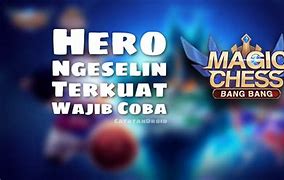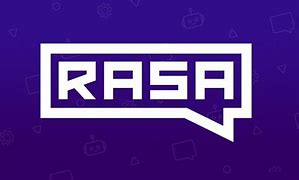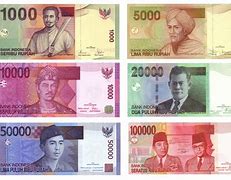
What is the Meme Generator?
It's a free online image maker that lets you add custom resizable text, images, and much more to templates. People often use the generator to customize established memes, such as those found in Imgflip's collection of Meme Templates. However, you can also upload your own templates or start from scratch with empty templates.
Early software age: selective search and Botvinnik
Since then, chess enthusiasts and computer engineers have built, with increasing degrees of seriousness and success, chess-playing machines and computer programs. One of the few chess grandmasters to devote himself seriously to computer chess was former World Chess Champion Mikhail Botvinnik, who wrote several works on the subject. Botvinnik's interest in Computer Chess started in the 50s, favouring chess algorithms based on Shannon's selective type B strategy, as discussed along with Max Euwe 1958 in Dutch Television. Working with relatively primitive hardware available in the Soviet Union in the early 1960s, Botvinnik had no choice but to investigate software move selection techniques; at the time only the most powerful computers could achieve much beyond a three-ply full-width search, and Botvinnik had no such machines. In 1965 Botvinnik was a consultant to the ITEP team in a US-Soviet computer chess match which won a correspondence chess match against the Kotok-McCarthy-Program led by John McCarthy in 1967.(see Kotok-McCarthy). Later he advised the team that created the chess program Kaissa at Moscow's Institute of Control Sciences. Botvinnik had his own ideas to model a Chess Master's Mind. After publishing and discussing his early ideas on attack maps and trajectories at Moscow Central Chess Clubin 1966, he found Vladimir Butenko as supporter and collaborator. Butenko first implemented the 15x15 vector attacks board representation on a M-20 computer, determining trajectories. After Botvinnik introduced the concept of Zones in 1970, Butenko refused further cooperation and began to write his own program, dubbed Eureka. In the 70s and 80s, leading a team around Boris Stilman, Alexander Yudin, Alexander Reznitskiy, Michael Tsfasman and Mikhail Chudakov, Botvinnik worked on his own project 'Pioneer' - which was an Artificial Intelligence based chess project. In the 90s, Botvinnik already in his 80s, he worked on the new project 'CC Sapiens'.
Types and features of chess software
Perhaps the most common type of chess software are programs that simply play chess. A human player makes a move on the board, the AI calculates and plays a subsequent move, and the human and AI alternate turns until the game ends. The chess engine, which calculates the moves, and the graphical user interface (GUI) are sometimes separate programs. Different engines can be connected to the GUI, permitting play against different styles of opponent. Engines often have a simple text command-line interface, while GUIs may offer a variety of piece sets, board styles, or even 3D or animated pieces. Because recent engines are so capable, engines or GUIs may offer some way of handicapping the engine's ability, to improve the odds for a win by the human player. Universal Chess Interface (UCI) engines such Fritz or Rybka may have a built in mechanism for reducing the Elo rating of the engine (via UCI's uci_limitstrength and uci_elo parameters). Some versions of Fritz have a Handicap and Fun mode for limiting the current engine or changing the percentage of mistakes it makes or changing its style. Fritz also has a Friend Mode where during the game it tries to match the level of the player.
Chess databases allow users to search through a large library of historical games, analyze them, check statistics, and formulate an opening repertoire. Chessbase (for PC) is a common program for these purposes amongst professional players, but there are alternatives such as Shane's Chess Information Database (Scid) [3] for Windows, Mac or Linux, Chess Assistant[4] for PC,[5] Gerhard Kalab's Chess PGN Master for Android[6] or Giordano Vicoli's Chess-Studio for iOS.[7]
Programs such as Playchess allow players to play against one another over the internet.
Chess training programs teach chess. Chessmaster had playthrough tutorials by IM Josh Waitzkin and GM Larry Christiansen. Stefan Meyer-Kahlen offers Shredder Chess Tutor based on the Step coursebooks of Rob Brunia and Cor Van Wijgerden. Former World Champion Magnus Carlsen's Play Magnus company released a Magnus Trainer app for Android and iOS. Chessbase has Fritz and Chesster for children. Convekta provides a large number of training apps such as CT-ART and its Chess King line based on tutorials by GM Alexander Kalinin and Maxim Blokh.
There is also software for handling chess problems.
Knowledge versus search (processor speed)
In the 1970s, most chess programs ran on super computers like Control Data Cyber 176s or Cray-1s, indicative that during that developmental period for computer chess, processing power was the limiting factor in performance. Most chess programs struggled to search to a depth greater than 3 ply. It was not until the hardware chess machines of the 1980s, that a relationship between processor speed and knowledge encoded in the evaluation function became apparent.
It has been estimated that doubling the computer speed gains approximately fifty to seventy Elo points in playing strength (Levy & Newborn 1991:192).
For most chess positions, computers cannot look ahead to all possible final positions. Instead, they must look ahead a few plies and compare the possible positions, known as leaves. The algorithm that evaluates leaves is termed the "evaluation function", and these algorithms are often vastly different between different chess programs. Evaluation functions typically evaluate positions in hundredths of a pawn (called a centipawn), where by convention, a positive evaluation favors White, and a negative evaluation favors Black. However, some evaluation function output win/draw/loss percentages instead of centipawns.
Historically, handcrafted evaluation functions consider material value along with other factors affecting the strength of each side. When counting up the material for each side, typical values for pieces are 1 point for a pawn, 3 points for a knight or bishop, 5 points for a rook, and 9 points for a queen. (See Chess piece relative value.) The king is sometimes given an arbitrarily high value such as 200 points (Shannon's paper) to ensure that a checkmate outweighs all other factors (Levy & Newborn 1991:45). In addition to points for pieces, most handcrafted evaluation functions take many factors into account, such as pawn structure, the fact that a pair of bishops are usually worth more, centralized pieces are worth more, and so on. The protection of kings is usually considered, as well as the phase of the game (opening, middle or endgame). Machine learning techniques such as Texel turning, stochastic gradient descent, or reinforcement learning are usually used to optimise handcrafted evaluation functions.
Most modern evaluation functions make use of neural networks. The most common evaluation function in use today is the efficiently updatable neural network, which is a shallow neural network whose inputs are piece-square tables. Piece-square tables are a set of 64 values corresponding to the squares of the chessboard, and there typically exists a piece-square table for every piece and colour, resulting in 12 piece-square tables and thus 768 inputs into the neural network. In addition, some engines use deep neural networks in their evaluation function. Neural networks are usually trained using some reinforcement learning algorithm, in conjunction with supervised learning or unsupervised learning.
The output of the evaluation function is a single scalar, quantized in centipawns or other units, which is, in the case of handcrafted evaluation functions, a weighted summation of the various factors described, or in the case of neural network based evaluation functions, the output of the head of the neural network. The evaluation putatively represents or approximates the value of the subtree below the evaluated node as if it had been searched to termination, i.e. the end of the game. During the search, an evaluation is compared against evaluations of other leaves, eliminating nodes that represent bad or poor moves for either side, to yield a node which by convergence, represents the value of the position with best play by both sides.
Endgame play had long been one of the great weaknesses of chess programs because of the depth of search needed. Some otherwise master-level programs were unable to win in positions where even intermediate human players could force a win.
To solve this problem, computers have been used to analyze some chess endgame positions completely, starting with king and pawn against king. Such endgame tablebases are generated in advance using a form of retrograde analysis, starting with positions where the final result is known (e.g., where one side has been mated) and seeing which other positions are one move away from them, then which are one move from those, etc. Ken Thompson was a pioneer in this area.
The results of the computer analysis sometimes surprised people. In 1977 Thompson's Belle chess machine used the endgame tablebase for a king and rook against king and queen and was able to draw that theoretically lost ending against several masters (see Philidor position#Queen versus rook). This was despite not following the usual strategy to delay defeat by keeping the defending king and rook close together for as long as possible. Asked to explain the reasons behind some of the program's moves, Thompson was unable to do so beyond saying the program's database simply returned the best moves.
Most grandmasters declined to play against the computer in the queen versus rook endgame, but Walter Browne accepted the challenge. A queen versus rook position was set up in which the queen can win in thirty moves, with perfect play. Browne was allowed 2½ hours to play fifty moves, otherwise a draw would be claimed under the fifty-move rule. After forty-five moves, Browne agreed to a draw, being unable to force checkmate or win the rook within the next five moves. In the final position, Browne was still seventeen moves away from checkmate, but not quite that far away from winning the rook. Browne studied the endgame, and played the computer again a week later in a different position in which the queen can win in thirty moves. This time, he captured the rook on the fiftieth move, giving him a winning position (Levy & Newborn 1991:144–48), (Nunn 2002:49).
Other positions, long believed to be won, turned out to take more moves against perfect play to actually win than were allowed by chess's fifty-move rule. As a consequence, for some years the official FIDE rules of chess were changed to extend the number of moves allowed in these endings. After a while, the rule reverted to fifty moves in all positions – more such positions were discovered, complicating the rule still further, and it made no difference in human play, as they could not play the positions perfectly.
Over the years, other endgame database formats have been released including the Edward Tablebase, the De Koning Database and the Nalimov Tablebase which is used by many chess programs such as Rybka, Shredder and Fritz. Tablebases for all positions with six pieces are available.[25] Some seven-piece endgames have been analyzed by Marc Bourzutschky and Yakov Konoval.[26] Programmers using the Lomonosov supercomputers in Moscow have completed a chess tablebase for all endgames with seven pieces or fewer (trivial endgame positions are excluded, such as six white pieces versus a lone black king).[27][28] In all of these endgame databases it is assumed that castling is no longer possible.
Many tablebases do not consider the fifty-move rule, under which a game where fifty moves pass without a capture or pawn move can be claimed to be a draw by either player. This results in the tablebase returning results such as "Forced mate in sixty-six moves" in some positions which would actually be drawn because of the fifty-move rule. One reason for this is that if the rules of chess were to be changed once more, giving more time to win such positions, it will not be necessary to regenerate all the tablebases. It is also very easy for the program using the tablebases to notice and take account of this 'feature' and in any case if using an endgame tablebase will choose the move that leads to the quickest win (even if it would fall foul of the fifty-move rule with perfect play). If playing an opponent not using a tablebase, such a choice will give good chances of winning within fifty moves.
The Nalimov tablebases, which use state-of-the-art compression techniques, require 7.05 GB of hard disk space for all five-piece endings. To cover all the six-piece endings requires approximately 1.2 TB. It is estimated that a seven-piece tablebase requires between 50 and 200 TB of storage space.[29]
Endgame databases featured prominently in 1999, when Kasparov played an exhibition match on the Internet against the rest of the world. A seven piece Queen and pawn endgame was reached with the World Team fighting to salvage a draw. Eugene Nalimov helped by generating the six piece ending tablebase where both sides had two Queens which was used heavily to aid analysis by both sides.
The most popular endgame tablebase is syzygy which is used by most top computer programs like Stockfish, Leela Chess Zero, and Komodo. It is also significantly smaller in size than other formats, with 7-piece tablebases taking only 18.4 TB.[30]
For a current state-of-the art chess engine like Stockfish, a table base only provides a very minor increase in playing strength (approximately 3 Elo points for syzygy 6men as of Stockfish 15).[31]
Chess engines, like human beings, may save processing time as well as select strong variations as expounded by the masters, by referencing an opening book stored in a disk database. Opening books cover the opening moves of a game to variable depth, depending on opening and variation, but usually to the first 10-12 moves (20-24 ply). Since the openings have been studied in depth by the masters for centuries, and some are known to well into the middle game, the valuations of specific variations by the masters will usually be superior to the general heuristics of the program.
While at one time, playing an out-of-book move in order to put the chess program onto its own resources might have been an effective strategy because chess opening books were selective to the program's playing style, and programs had notable weaknesses relative to humans, that is no longer true today.[when?] The opening books stored in computer databases are most likely far more extensive than even the best prepared humans, and playing an early out-of-book move may result in the computer finding the unusual move in its book and saddling the opponent with a sharp disadvantage. Even if it does not, playing out-of-book may be much better for tactically sharp chess programs than for humans who have to discover strong moves in an unfamiliar variation over the board.
In modern engine tournaments, opening books are used to force the engines to play intentionally unbalanced openings to reduce the draw rate and to add more variety to the games.[32]
Do you have a wacky AI that can write memes for me?
Funny you ask. Why yes, we do. Here you go: imgflip.com/ai-meme (warning, may contain vulgarity)
Later software age: full-width search
One developmental milestone occurred when the team from Northwestern University, which was responsible for the Chess series of programs and won the first three ACM Computer Chess Championships (1970–72), abandoned type B searching in 1973. The resulting program, Chess 4.0, won that year's championship and its successors went on to come in second in both the 1974 ACM Championship and that year's inaugural World Computer Chess Championship, before winning the ACM Championship again in 1975, 1976 and 1977. The type A implementation turned out to be just as fast: in the time it used to take to decide which moves were worthy of being searched, it was possible just to search all of them. In fact, Chess 4.0 set the paradigm that was and still is followed essentially by all modern Chess programs today, and that had been successfully started by the Russian ITEP in 1965.
D Chess Meme Generator
Can I make animated or video memes?
Yes! Animated meme templates will show up when you search in the Meme Generator above (try "party parrot"). If you don't find the meme you want, browse all the GIF Templates or upload and save your own animated template using the GIF Maker.
Neural network revolution
While neural networks have been used in the evaluation functions of chess engines since the late 1980s, with programs such as NeuroChess, Morph, Blondie25, Giraffe, AlphaZero, and MuZero,[43][44][45][46][47] neural networks did not become widely adopted by chess engines until the arrival of efficiently updatable neural networks in the summer of 2020. Efficiently updatable neural networks were originally developed in computer shogi in 2018 by Yu Nasu,[48][49] and had to be first ported to a derivative of Stockfish called Stockfish NNUE on 31 May 2020,[50] and integrated into the official Stockfish engine on 6 August 2020,[51][52] before other chess programmers began to adopt neural networks into their engines.
Some people, such as the Royal Society's Venki Ramakrishnan, believe that AlphaZero lead to the widespread adoption of neural networks in chess engines.[53] However, AlphaZero influenced very few engines to begin using neural networks, and those tended to be new experimental engines such as Leela Chess Zero, which began specifically to replicate the AlphaZero paper. The deep neural networks used in AlphaZero's evaluation function required expensive graphics processing units, which were not compatible with existing chess engines. The vast majority of chess engines only use central processing units, and computing and processing information on the GPUs require special libraries in the backend such as Nvidia's CUDA, which none of the engines had access to. Thus the vast majority of chess engines such as Komodo and Stockfish continued to use handcrafted evaluation functions until efficiently updatable neural networks were ported to computer chess in 2020, which did not require either the use of GPUs or libraries like CUDA at all. Even then, the neural networks used in computer chess are fairly shallow, and the deep reinforcement learning methods pioneered by AlphaZero are still extremely rare in computer chess.
These chess playing systems include custom hardware with approx. dates of introduction (excluding dedicated microcomputers):
Availability and playing strength
Chess machines/programs are available in several different forms: stand-alone chess machines (usually a microprocessor running a software chess program, but sometimes as a specialized hardware machine), software programs running on standard PCs, web sites, and apps for mobile devices. Programs run on everything from super-computers to smartphones. Hardware requirements for programs are minimal; the apps are no larger than a few megabytes on disk, use a few megabytes of memory (but can use much more, if it is available), and any processor 300 Mhz or faster is sufficient. Performance will vary modestly with processor speed, but sufficient memory to hold a large transposition table (up to several gigabytes or more) is more important to playing strength than processor speed.
Most available commercial chess programs and machines can play at super-grandmaster strength (Elo 2700 or more), and take advantage of multi-core and hyperthreaded computer CPU architectures. Top programs such as Stockfish have surpassed even world champion caliber players. Most chess programs comprise a chess engine connected to a GUI, such as Winboard or Chessbase. Playing strength, time controls, and other performance-related settings are adjustable from the GUI. Most GUIs also allow the player to set up and to edit positions, to reverse moves, to offer and to accept draws (and resign), to request and to receive move recommendations, and to show the engine's analysis as the game progresses.
There are thousands of chess engines such as Sargon, IPPOLIT, Stockfish, Crafty, Fruit, Leela Chess Zero and GNU Chess which can be downloaded (or source code otherwise obtained) from the Internet free of charge.























